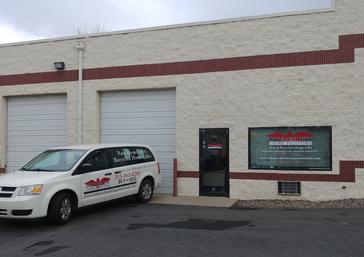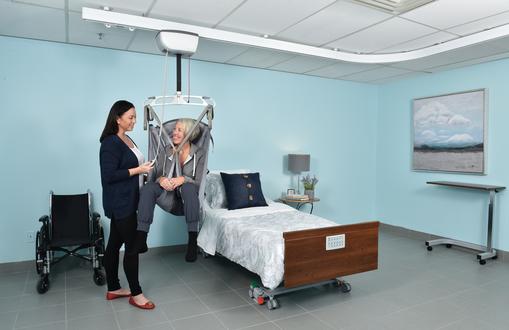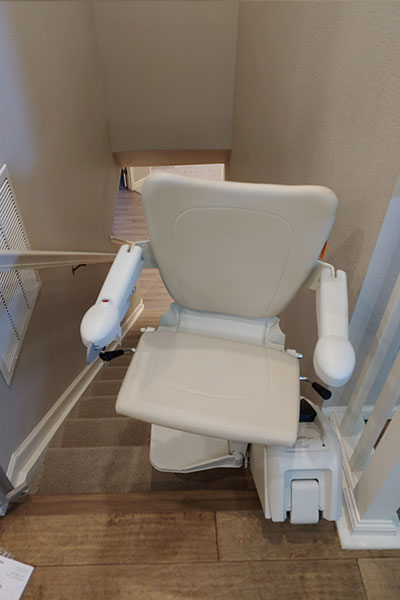
by Steven Pal | Aug 30, 2024 | Blogs
As we age or face mobility challenges due to injuries or health conditions, getting around can become difficult. Whether it’s arthritis, Parkinson’s Disease, or a decrease in strength and balance, these issues can limit your ability to move freely. But you don’t have to give up your independence. A mobility scooter could be the solution that helps you regain your freedom and improve your quality of life.
A mobility scooter in Denver offers a practical way to get around, whether inside your home or out in the community. These scooters are designed to be easy to use, safe, and comfortable. They allow you to handle daily tasks, visit friends, and enjoy outdoor activities without the physical strain or fear of falling.
Regain Your Independence
One of the most significant benefits of using a mobility scooter in Denver or elsewhere is the independence it provides. You no longer need to rely on others to help you move around. Whether you want to go to the grocery store, visit a park, or simply move around your home, a mobility scooter gives you the freedom to do so on your own terms.
This sense of independence can have a profound impact on your life. It can boost your self-esteem and make you feel more in control of your daily routine. You can decide where you want to go and when, without having to wait for assistance from family members or caregivers.
Enhance Your Quality of Life
Mobility scooters do more than just help you get from point A to point B. By making it easier to move around, the mobility equipment allows you to partake in activities you enjoy. You can attend social events, go shopping, or spend time outdoors, all without the worry of how you’ll manage to get there.
For many people, staying active and engaged in their community is essential to their well-being. A mobility scooter helps you maintain an active lifestyle, which is imperative for both physical and mental health. When you can move around comfortably and safely, you’re more likely to stay involved in the activities that bring you joy.
A Safer Way to Get Around
Safety is a top concern for anyone with mobility challenges. Walking, especially over long distances or uneven terrain, can be risky. A mobility scooter offers a safer alternative. These scooters are equipped with safety features like speed control, stable wheels, and comfortable seating to ensure a smooth and secure ride.
The adjustable seating and tiller (the steering mechanism) on a mobility scooter allow you to find the perfect position for comfort and posture, reducing the risk of strain or injury. Additionally, features like LED battery indicators help you keep track of your scooter’s power, so you’re never caught off guard.
Convenience and Ease of Use
Another advantage of mobility scooters is their convenience. They are designed to be user-friendly, with simple controls that make them easy to operate. Whether you’re using a full-size scooter or a portable model, you’ll find that these devices are intuitive and straightforward.
Many models come with features like a front basket for carrying personal items, making it easy to run errands. The long battery life ensures that you can travel anywhere in and around your place without worrying about running out of power. And when you’re done, some scooters even have a freewheel mode, allowing you to push the scooter manually if needed.
A Cost-Effective Solution
For those considering mobility aids, a mobility scooter for sale in Denver can be a cost-effective solution. Compared to power wheelchairs, mobility scooters are generally more affordable and better suited for outdoor use. They offer a perfect blend of functionality, comfort, and price, making them a smart investment for anyone with mobility issues.
At Independent Living Solutions, we offer a variety of mobility scooters to meet different needs and budgets. Whether you’re looking for a portable scooter to take on trips or a heavy-duty model for daily use, we have a range of options that will suit your lifestyle.
Conclusion
Mobility scooters are more than just a way to get around. They are a tool for regaining independence, improving quality of life, and staying active. Whether you’re dealing with age-related mobility issues, recovering from an injury, or living with a medical condition, a mobility scooter can help you navigate your world with confidence and ease.
If you or a loved one are considering a mobility scooter, take the time to explore the options available. With the right scooter, you can continue to enjoy life’s activities without being held back by mobility challenges. Contact Independent Living Solutions today to learn more about how a mobility scooter can benefit you.

by Steven Pal | Aug 29, 2024 | Blogs
Creating a home environment that accommodates the needs of individuals with mobility challenges is essential for ensuring comfort, safety, and independence. One of the most effective solutions for enhancing accessibility in the home is the installation of a handicap ceiling lift system. These systems offer a practical and efficient way to assist individuals in moving between different areas of their homes, providing both convenience and security. In this blog, we’ll explore the benefits of handicap ceiling lift systems, how they work, and key considerations when choosing and installing ceiling lifts for homes.
The Benefits of Handicap Ceiling Lift Systems
Handicap ceiling lift systems are designed to assist individuals with mobility challenges in moving from one location to another with ease. Here’s why they are highly valued:
Enhanced Mobility and Independence
One of the primary benefits of a handicap ceiling lift system is the increased mobility and independence it provides. For individuals who have difficulty getting out of bed, walking, or moving, a ceiling lift allows them to transition smoothly between different areas of their home, such as from a bed to a wheelchair or from a wheelchair to a bathroom. This reduces the need for manual assistance and promotes greater self-sufficiency.
Reduced Risk of Injury
Ceiling lift systems help mitigate the risk of injury for both the user and caregivers. By using a lift to move individuals, the risk of falls, strains, or other accidents is significantly reduced. This is particularly important for caregivers who might otherwise need to physically lift or transfer individuals, which can be physically demanding.
Versatility and Convenience
Handicap ceiling lifts offer versatility and convenience by allowing users to move effortlessly between different areas of the home. Whether transitioning from a bedroom to a living area or from a wheelchair to a shower, the ceiling lift system can accommodate various needs. This convenience can greatly improve the quality of life and daily living experience.
Space Efficiency
Ceiling lifts are installed above head height, which means they do not take up valuable floor space. This makes them ideal for homes with limited space or those where maintaining an open floor plan is important. The system’s discreet installation ensures that living areas remain unobstructed.
Customizable and Expandable
Many handicap ceiling lift systems are customizable to fit the specific layout and needs of a home. They can be designed to cover various distances and configurations, and some systems can be expanded or reconfigured as needs change. This adaptability ensures that the lift system remains effective as circumstances evolve.
How Handicap Ceiling Lift Systems Work
A handicap ceiling lift system typically consists of several key components:
Ceiling Track
The ceiling track is the primary component of the lift system, mounted securely to the ceiling. This track supports the lift and provides a path for it to travel along. It can be configured in various layouts, including straight, curved, or even complex multi-directional tracks, depending on the needs of the home.
Lift Unit
The lift unit is the motorized component that moves along the ceiling track. It is equipped with a lifting mechanism that raises and lowers a user or their mobility device. The lift unit is controlled via a remote or pendant control, allowing users or caregivers to operate the lift with ease.
Lift Sling or Carrier
The sling or carrier is the part of the system that supports the user. It is attached to the lift unit and provides a safe and comfortable way to move individuals. Slings come in various sizes and styles to accommodate different needs and preferences.
Control System
The control system allows users or caregivers to operate the lift unit. This can include a remote control, pendant, or wall-mounted controls. Some systems offer advanced features, such as programmable settings or voice activation, for added convenience.
Installation and Safety Features
Proper installation is imperative for the safety and effectiveness of the ceiling lift system. Professional installers like ours ensure the system is securely mounted and operates correctly. Safety features, such as load sensors, emergency stop buttons, and safety straps, are also integrated to prevent accidents and ensure reliable operation.
Choosing the Right Handicap Ceiling Lift System for Your Home
When selecting a handicap ceiling lift system for your home, consider the following factors to ensure you choose the best option:
Assess Your Needs
Evaluate the user’s specific needs and the layout of your home. Consider factors such as the distance the lift needs to travel, the weight capacity required, and any special requirements, such as transferring between specific rooms or handling multiple users.
Consult with a Professional
Consulting with a professional who specializes in ceiling lift systems can provide valuable insights and recommendations. They can assess your home’s layout, discuss your needs, and help design a system that meets your requirements. Professional advice ensures that the lift system is installed correctly and functions optimally.
Consider the Layout
The layout of your home will influence the design of the ceiling track system. Straight tracks are suitable for simple, linear movements, while curved or multi-directional tracks are needed for more complex layouts. Consider the space available and how the lift system will integrate with your home’s design.
Evaluate Features and Options
Explore the features and options available for ceiling lift systems. Some systems offer advanced controls, programmable settings, or additional safety features. Before your purchase, determine which features are important for your needs and budget.
Check for Warranty and Support
Ensure that the ceiling lift system comes with a warranty and access to support services. A warranty gives you peace of mind in case of any issues with the equipment, while support services can assist with maintenance and repairs.
Installing and Using Your Handicap Ceiling Lift System
Once you’ve selected and purchased your ceiling lift system, proper installation and usage are essential for maximizing its benefits:
Professional Installation
Professional installation is recommended to make sure the system is mounted securely and operates correctly. Installers will handle the setup, including mounting the track, installing the lift unit, and configuring the control system.
Follow Usage Instructions
Carefully review and follow the manufacturer’s usage instructions for the lift system. This includes operating the controls, using the sling or carrier, and performing routine maintenance.
Perform Regular Maintenance
Regular maintenance is important to ensure the lift system remains in good working condition. Inspect the track, lift unit, and sling for any signs of wear or damage. Schedule periodic maintenance checks with a professional to address any issues.
Train Users and Caregivers
Ensure that all users and caregivers are properly trained on how to operate the ceiling lift system. This includes understanding how to use the controls, position the sling, and perform any necessary safety checks.
Conclusion
A handicap ceiling lift system offers a practical and efficient solution for enhancing accessibility and mobility within the home. By providing safe and convenient movement between different areas, ceiling lifts improve the quality of life for individuals with mobility challenges and reduce the physical strain on caregivers. When exploring options for handicap ceiling lifts for homes, consider factors such as layout, features, and professional installation to ensure you select the best system for your needs. With the right ceiling lift system, you can create a more accessible living environment, promoting greater independence and ease of movement for everyone in the home.

by Steven Pal | Aug 28, 2024 | Blogs
When considering how to make a multi-level home more accessible, choosing between a vertical platform lift (VPL) and a home elevator can be challenging. Both options offer significant benefits, but the right choice depends on your specific needs, home layout, and budget. In this guide, we will help you understand the key differences between these two solutions and assist you in making the best decision for your situation.
Vertical Platform Lifts: A Practical Solution for Mobility Challenges
Vertical platform lifts, often referred to as wheelchair lifts, provide easy access to elevated areas like porches, decks, and even different floors within your home. These lifts are particularly helpful if you or a family member uses a wheelchair or has difficulty navigating stairs. With a VPL, you can simply roll or step onto the platform, and the lift will smoothly raise you to the desired height.
One of the main advantages of vertical platform lifts is their compact design. They take up much less space than a ramp, making them an ideal choice for homes where space is limited. For instance, if your front steps are steep or if your porch is elevated, a VPL can be a great alternative to a long and winding ramp.
Additionally, vertical platform lifts are versatile and can be installed both indoors and outdoors. This flexibility allows you to access all areas of your home, from your backyard deck to your second-floor bedroom, without any hassle. The lifts are also equipped with essential safety features like automatic folding ramps, safety sensors, and emergency stop buttons, ensuring a safe and smooth ride every time.
Independent Living Solutions offers high-quality vertical platform lifts that cater to various needs. Their products blend seamlessly into your home while providing reliable accessibility. If you’re considering a cost-effective solution, used wheelchair lifts for stairs may also be available through their popular recycled equipment program, making it easier to find a lift that fits your budget.
Elevators: A Stylish and Convenient Option for Multi-Level Homes
Home elevators are another excellent solution for enhancing accessibility, especially if you have multiple floors in your home. Elevators provide a level of convenience and luxury that is unmatched by other mobility solutions. They allow you to move effortlessly between floors without the need to navigate stairs.
There are two primary types of residential elevators: those that require a hoistway and those that do not.
Elevators with a Hoistway are typically installed in a dedicated shaft or hoistway, which often resembles a closet when the elevator doors are closed. These elevators are designed to blend into your home’s architecture, providing a sleek and discreet solution. However, installing a hoistway elevator can be more complex and may need significant modifications to your home. You’ll need to ensure that there is enough space, usually about 5 x 5 feet and that the structure can support the weight of the elevator and its occupants.
On the other hand, Elevators Without a Hoistway are a more cost-effective option. These elevators don’t require a shaft and can often be installed more quickly and easily. They do, however, need a load-bearing wall to support the elevator’s weight. While these elevators are not as concealed as those with a hoistway, they still provide a stylish and functional way to move between floors. This option is ideal for homes where space is limited or for those looking to add an elevator without major construction work.
For those interested in this type of solution, Independent Living Solutions offers various residential elevators for sale. Their team can help you choose an elevator that not only meets your needs but fits seamlessly into your home.
Choosing the Right Solution for Your Home
When deciding between a residential elevator and a wheelchair lift for stairs, there are several factors to consider:
- Space- VPLs require less space than elevators, making them a better choice for homes with limited room. Elevators, however, offer a more permanent and aesthetically pleasing solution.
- Budget- VPLs are generally more affordable, both in terms of the initial cost and installation. Elevators, especially those with a hoistway, tend to be a bit expensive but offer a higher level of convenience.
- Aesthetics- If maintaining the visual appeal of your home is important, a hoistway elevator might be the better choice. However, VPLs can be installed in less visible areas, like the side of a porch or in a garage.
- Mobility Needs- Consider the specific mobility challenges you or your family members face. If wheelchair accessibility is a priority, a VPL may be the most practical option. If you’re looking for an all-around solution for multi-level access, an elevator could be the better fit.
Ultimately, both vertical platform lifts and home elevators can significantly improve the accessibility of your home. By carefully weighing both the pros and cons of each option, you can pick the solution that best meets your needs and also enhances your quality of life.




Recent Comments